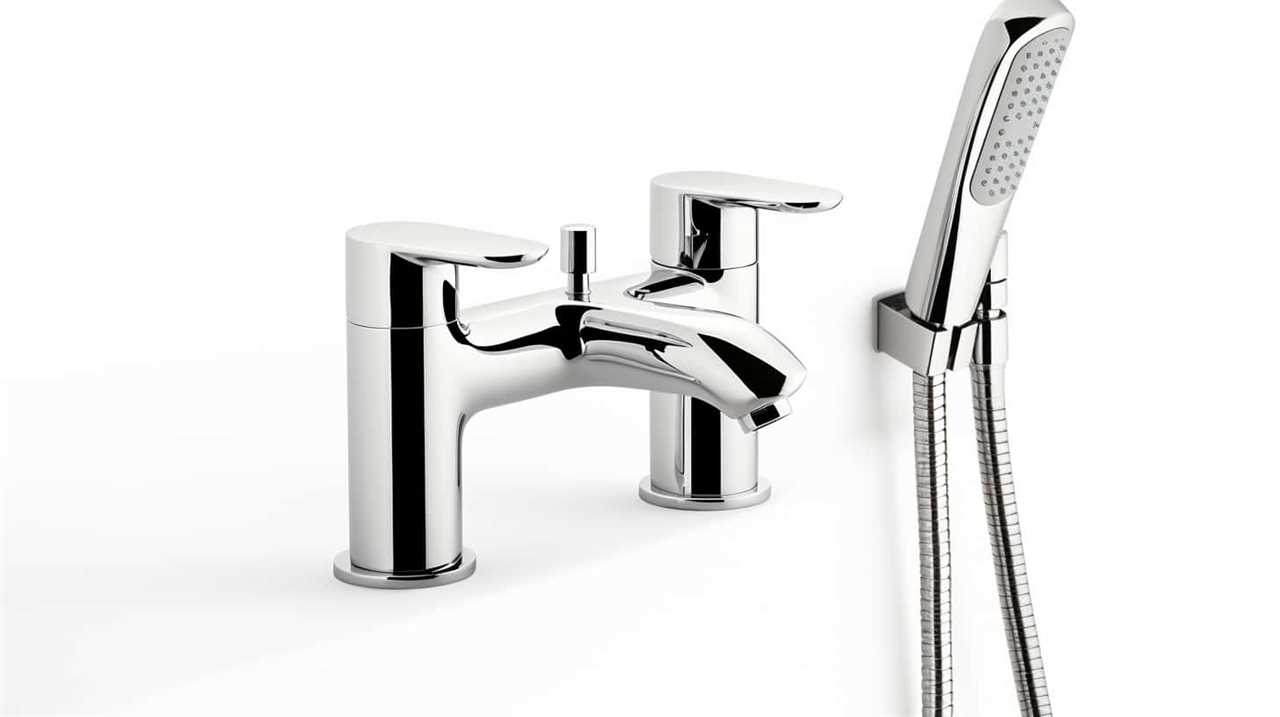We understand the frustration that comes with a clogged bathroom sink. But don’t worry, we are here to assist you in unclogging it!
In this step-by-step guide, we’ll show you how to:
- Identify the cause of the blockage
- Remove any visible debris
- Use a plunger to dislodge the clog
- Use a homemade solution to dissolve the blockage
We’ll even share tips on preventing future clogs.
Get ready to master the art of unblocking your bathroom sink!

Key Takeaways
- Slow draining, gurgling sounds, and standing water are signs of a blocked bathroom sink.
- Removing visible debris with gloves, tweezers, and a plunger can help unclog the sink.
- Using a plunger with water to create a seal and applying firm pressure can dislodge the clog.
- Homemade solutions like baking soda and vinegar, or salt and hot water, can help dissolve the blockage.
Identify the Cause of the Blockage
To start unblocking a bathroom sink, we need to identify the cause of the blockage by using a flashlight and observing the drainage area. Common signs of a blocked bathroom sink include slow draining, gurgling sounds, and standing water.
By shining a flashlight down the drain, we can look for any visible debris or buildup that may be causing the blockage.
If the blockage is stubborn and can’t be easily identified or removed, it may be necessary to seek professional plumbing services. Professional plumbers have the expertise and specialized tools to tackle even the most stubborn blockages.
They can use techniques such as hydro jetting or drain snaking to effectively clear the blockage and restore proper drainage.

Remove Any Visible Debris From the Sink
Now that we have identified the cause of the blockage, let’s proceed to remove any visible debris from the sink. This step is crucial in ensuring that the sink is free from any obstruction. Here are some sink cleaning techniques to help you effectively remove debris:
- Use a pair of gloves to protect your hands.
- Start by removing any large particles of debris using your hands or a pair of tweezers.
- Next, use a plunger to dislodge any remaining debris. Place the plunger over the drain and push down firmly, then pull up quickly to create suction. Repeat this motion several times until the debris is cleared.
To further assist you, here is a table depicting some common causes of bathroom sink blockages:
| Cause | Description | Solution |
|---|---|---|
| Hair buildup | Accumulation of hair in the drain | Use a drain snake or chemical drain cleaner |
| Soap scum and residue | Buildup of soap and other residues | Use a mixture of vinegar and baking soda |
| Foreign objects | Items accidentally dropped into the sink | Use a plunger or call a professional plumber |
Use a Plunger to Dislodge the Clog
We can effectively dislodge the clog in the bathroom sink by using a plunger. If the previous step of removing visible debris didn’t solve the problem, a plunger is a great tool to try next. Here’s how to use it:
- Fill the sink partially with water to create a seal around the plunger.
- Position the plunger over the drain and make sure it covers it completely.
- Apply firm pressure and start plunging up and down vigorously.
- Repeat this motion several times, maintaining a good seal.
- After a few attempts, check if the water starts to drain. If it does, the clog is likely cleared.
If the clog persists, it’s important to consider alternative solutions for unclogging a bathroom sink. Professional plumbing services should be sought for persistent clogs, as they have the expertise and tools to handle more difficult blockages.

Using a plunger is a simple and effective method to dislodge clogs in the bathroom sink, but if the issue persists, it’s best to consult a professional plumber for further assistance.
Try a Homemade Solution to Dissolve the Blockage
After attempting to dislodge the clog with a plunger, our next step is to explore a homemade solution to dissolve the blockage. Here are three options to consider:
- Baking Soda and Vinegar: Start by pouring half a cup of baking soda down the drain, followed by half a cup of vinegar. Let it sit for about 30 minutes, then flush the drain with hot water. The chemical reaction between the baking soda and vinegar can help break down the clog.
- Salt and Hot Water: Mix half a cup of salt with a pot of boiling water. Pour the mixture down the drain and let it sit for a few minutes. The hot water can help dissolve the blockage, while the salt acts as a natural abrasive.
- Chemical Alternatives: If the homemade solutions don’t work, you can try using a chemical drain cleaner specifically designed for bathroom sinks. However, be cautious when handling these products and follow the instructions carefully.
If none of these methods work, it may be time to consider hiring professional plumbers for stubborn blockages.
In the next section, we’ll discuss how to prevent future clogs with regular maintenance.

Prevent Future Clogs With Regular Maintenance
To maintain a clog-free bathroom sink, it’s important that we regularly perform preventative maintenance. By taking proactive measures, we can prevent future clogs and ensure our sink drains smoothly. Here are two key steps to incorporate into our regular maintenance routine:
- Use drain screens: Installing drain screens is a simple yet effective way to prevent debris, hair, and other potential clogging materials from entering our sink drain. These screens act as filters, catching any unwanted particles and allowing only water to pass through. Regularly cleaning and emptying these screens will further enhance their effectiveness.
- Hire a professional plumber: While we can handle some maintenance tasks ourselves, it’s advisable to hire a professional plumber for regular maintenance. They have the expertise and tools to perform a thorough inspection of our sink drain, ensuring that it remains in optimal condition. A plumber can identify any potential issues early on and provide necessary repairs or replacements, preventing major clogs from occurring.
Frequently Asked Questions
How Can I Identify the Cause of the Blockage in My Bathroom Sink?
To identify the cause of a bathroom sink blockage, we can troubleshoot by checking the drain stopper, removing any visible debris, using a plunger, or using a drain snake. These step-by-step techniques will help you pinpoint and fix the problem.
Are There Any Specific Tools or Techniques to Remove Visible Debris From the Sink?
To remove visible debris from the sink, start by using a sink snake to dislodge any clogs. If that doesn’t work, try pouring a vinegar solution down the drain to dissolve the blockage.
Can I Use a Plunger to Unclog the Bathroom Sink, and if So, How Do I Do It Correctly?
We can use a plunger to unclog the bathroom sink. First, cover the overflow opening with a towel. Then, create a tight seal around the drain with the plunger and plunge vigorously.

What Are Some Homemade Solutions I Can Try to Dissolve the Blockage in My Bathroom Sink?
To dissolve blockage in our bathroom sink, we can try some homemade solutions. First, mix baking soda and vinegar, pour it down the drain, and let it sit for a while. Then, run hot water to flush away the blockage.
What Are Some Tips for Regular Maintenance to Prevent Future Clogs in the Bathroom Sink?
Regular maintenance tips for preventing bathroom sink clogs include avoiding pouring grease down the drain, using a hair catcher, and periodically cleaning the pipes. To unclog a sink, properly use a plunger by creating a tight seal and applying firm pressure.
Conclusion
In conclusion, by following these simple steps, you can easily unblock your bathroom sink and prevent future clogs.
Remember to:

- Identify the cause of the blockage
- Remove any visible debris
- Use a plunger if necessary
- Try a homemade solution
Regular maintenance is also key in keeping your sink clear. So, take action now and enjoy a smoothly flowing bathroom sink. Your sink will thank you!










